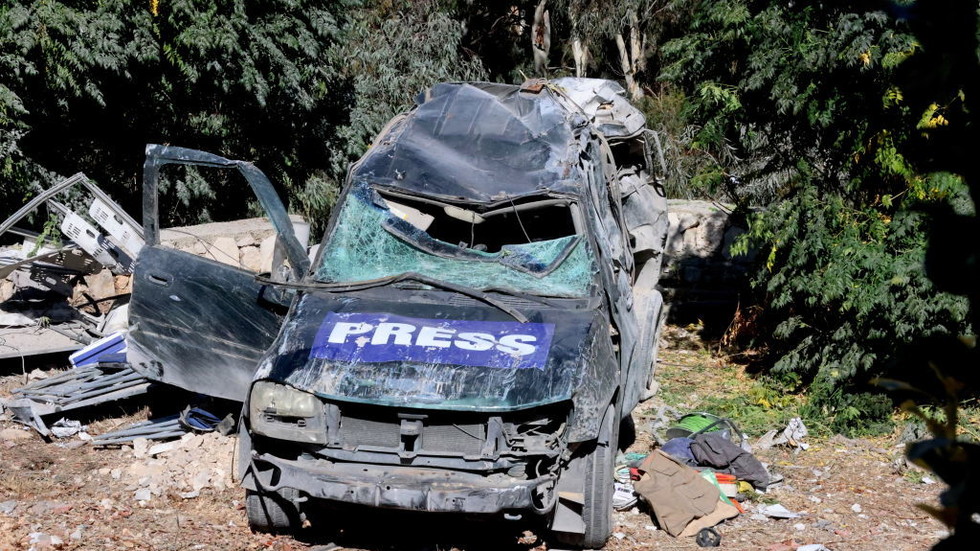On Friday morning, the Israeli air force conducted an airstrike on a media shelter in southern Lebanon, targeting a guesthouse that housed journalists covering the ongoing conflict between Israel and Hezbollah. Reports indicate that the strike occurred around 3 AM local time, resulting in the deaths of three journalists and injuring several others. This tragic incident unfolded in Hasbaya, where a group of 18 journalists from various media outlets, including Al Jazeera and Sky News Arabia, had relocated due to escalating Israeli bombings at their previous accommodation. The journalists were caught off-guard in their sleep as the airstrike specifically targeted their chalet, leading to a significant loss within the press community.
The victims of this brutal attack were identified as Ghassan Najjar and Mohamed Reda from Al Mayadeen and Wissam Qassem of Al Manar. Both media outlets are known for their alignment with Hezbollah, which has drawn the ire of Israeli forces. Eyewitness accounts from the scene highlighted the devastation of the airstrike, showing collapsed buildings, damaged vehicles, some of which were clearly marked for the press. The violence against journalists in this situation underscores the perilous conditions under which these individuals operate while trying to report on conflicts.
In response to the airstrike, Lebanese Information Minister Ziad Makary publicly condemned the attack, categorizing it as a “war crime.” He claimed that the targeting of the journalists was a deliberate act, stating that the presence of 18 journalists during the attack indicates a premeditated assault. The timing of this airstrike is particularly alarming when viewed in the context of Israel’s ongoing military operations in Lebanon, which have resulted in significant casualties and destruction. Just two days prior, Israeli strikes on another Al Mayadeen office in Beirut had already raised alarms regarding the safety of journalists in the region.
The broader context of violence against journalists cannot be overlooked, as highlighted by the statistics from the Committee to Protect Journalists, which indicate at least 125 journalists have lost their lives in the ongoing conflict in Gaza in the last year alone. Israeli authorities have further escalated tensions by accusing six Al Jazeera journalists in Gaza of being affiliated with Hamas and Islamic Jihad, claims the network has denounced as unfounded. These allegations serve to vilify journalists and put them in even more precarious positions while they endeavor to cover a conflict marked by deepening hostilities.
In addition to the tragedy of the airstrike, the Israeli Defense Forces have intensified their offensive in Lebanon, having initiated a series of airstrikes and ground incursions. Reports indicate that Israel’s military campaign has significantly affected civilian populations, with the Lebanese Health Ministry reporting over 2,500 casualties due to Israeli attacks. This ongoing violence has created an environment of fear and uncertainty for both journalists and civilians alike, raising urgent questions about accountability and protection for those covering war zones.
As the situation continues to escalate, the international community faces pressure to respond. Calls for the protection of journalists and investigation into potential war crimes are growing louder, especially amid the backdrop of escalating casualties and military action. The deliberate targeting of journalists, such as the airstrike in Hasbaya, highlights the need for renewed attention to media safety and the recognition of the critical role journalists play in informing the public amidst conflict.

